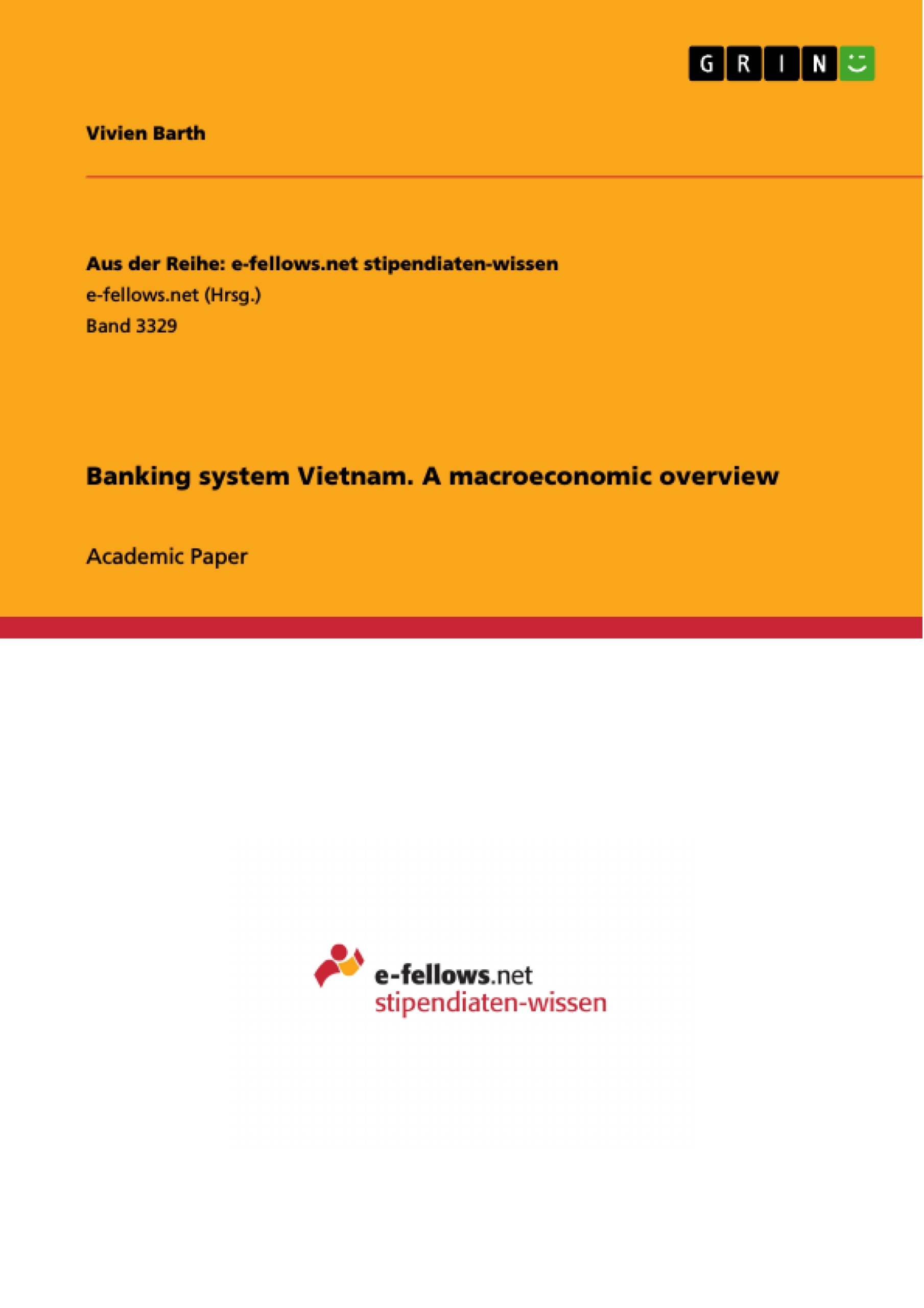This essay describes Vietnam's banking system and provides an overview of its macroeconomic environment. Vietnam is one of the fastest growing countries in the world.
In 1986, Vietnam shifted from a centrally planned to a market economy. This transformed Vietnam from one of the poorest into a lower middle-income country (World Bank, 2019). Today, it is the world’s ninth fastest growing economy with commitment to sustainable growth, strong foreign direct investment (FID) inflows and a strong manufacturing sector. Vietnam’s GDP growth projection for 2019 is 6.6 % (Focus Economics, 2019).
Inhaltsverzeichnis (Table of Contents)
- Introduction
- Macroeconomic assessment
- Banking and financial system
- Banking structure
Zielsetzung und Themenschwerpunkte (Objectives and Key Themes)
This report offers a comprehensive analysis of Vietnam's macroeconomic environment and provides an insightful overview of its financial and banking system. It delves into the country's economic growth trajectory, highlighting key drivers and challenges. Furthermore, the report examines the structure and evolution of Vietnam's banking system, including its role in supporting economic development.
- Economic growth and development in Vietnam
- Impact of foreign direct investment (FDI)
- Role of the manufacturing sector in driving economic growth
- Structure and evolution of Vietnam's banking system
- Challenges and opportunities for the banking sector
Zusammenfassung der Kapitel (Chapter Summaries)
- Introduction: This chapter provides an overview of Vietnam's economic transformation since 1986, highlighting its transition from a centrally planned economy to a market economy. It introduces key macroeconomic indicators, including GDP growth, foreign direct investment (FDI), and the manufacturing sector's role in driving economic development.
- Macroeconomic assessment: This chapter analyzes Vietnam's GDP growth trend, comparing it to the UK's GDP growth and the average GDP growth of other lower middle-income countries. It highlights the role of the manufacturing sector in driving Vietnam's economic performance and explores factors such as low production costs, lower tariffs and taxes for foreign companies, and strong FDI inflows. The chapter also discusses the impact of these factors on unemployment, wages, and consumer lending.
- Banking and financial system: Banking structure: This chapter examines the structure of Vietnam's banking system, emphasizing the dominance of state-owned banks. It discusses the decline in the number of commercial banks over the past decade, attributing this trend to the adoption of Basel II standards and the domestic banking crisis of 2012. The chapter also explores the role of foreign banks in Vietnam's banking sector and the government's policies regarding foreign investment in Vietnamese banks.
Schlüsselwörter (Keywords)
Key terms and concepts explored in this report include Vietnam's economic transformation, macroeconomic environment, GDP growth, foreign direct investment (FDI), manufacturing sector, banking system, state-owned banks, Basel II standards, domestic banking crisis, foreign bank investment, and non-performing loans (NPL).
- Quote paper
- Vivien Barth (Author), 2019, Banking system Vietnam. A macroeconomic overview, Munich, GRIN Verlag, https://www.grin.com/document/513251



